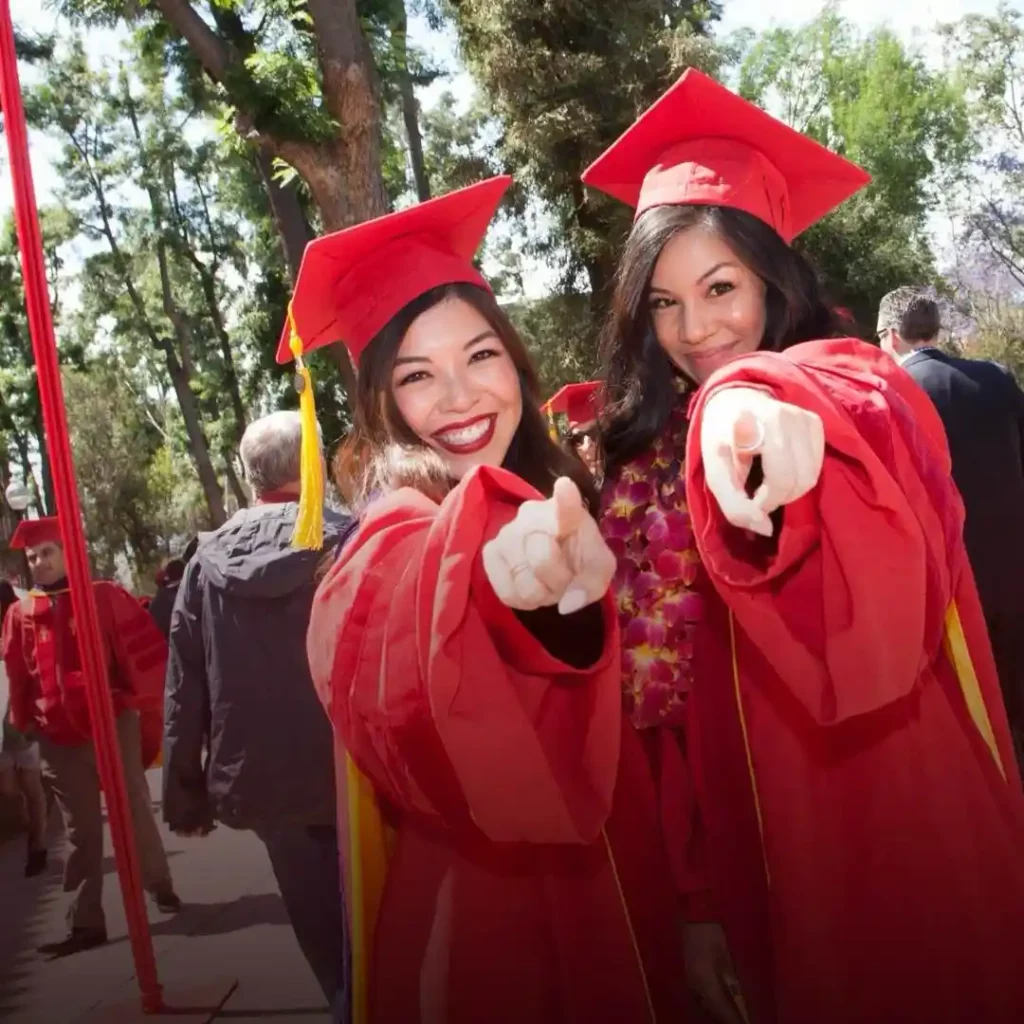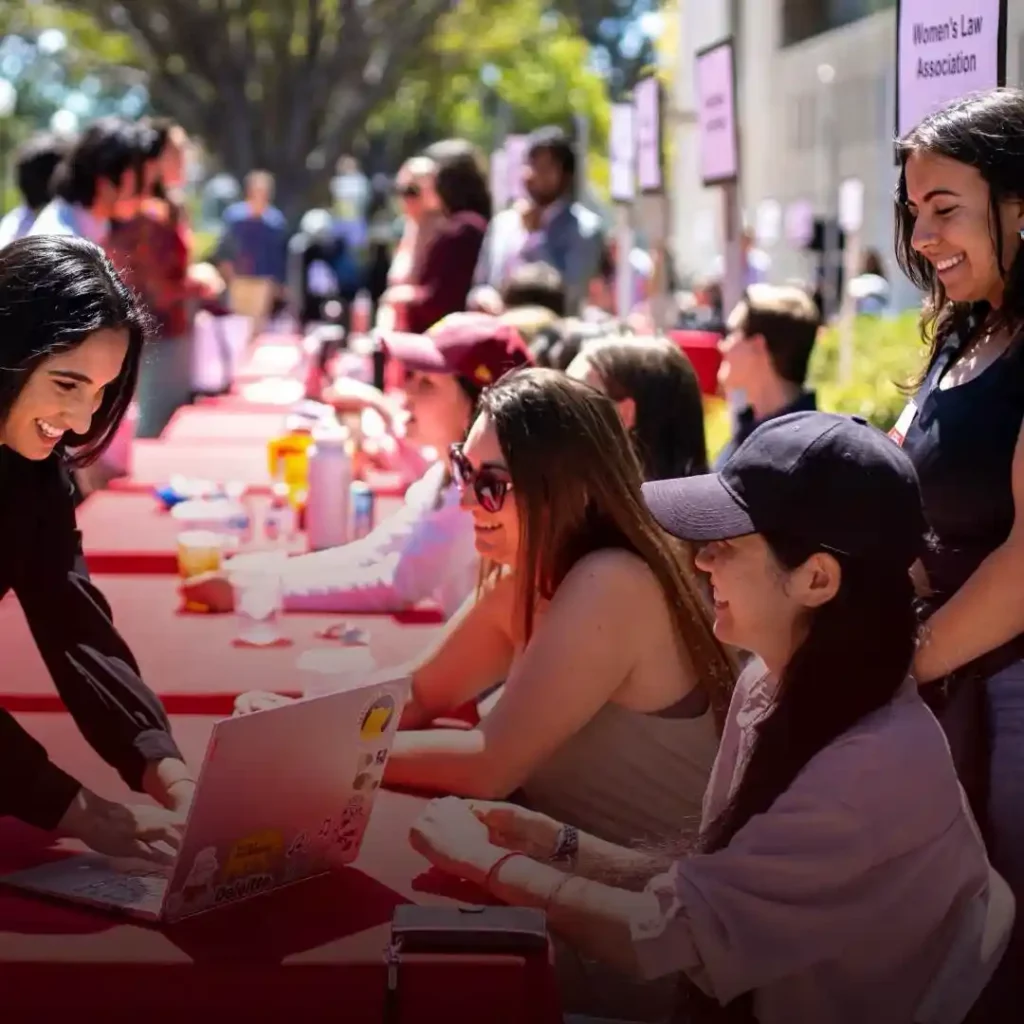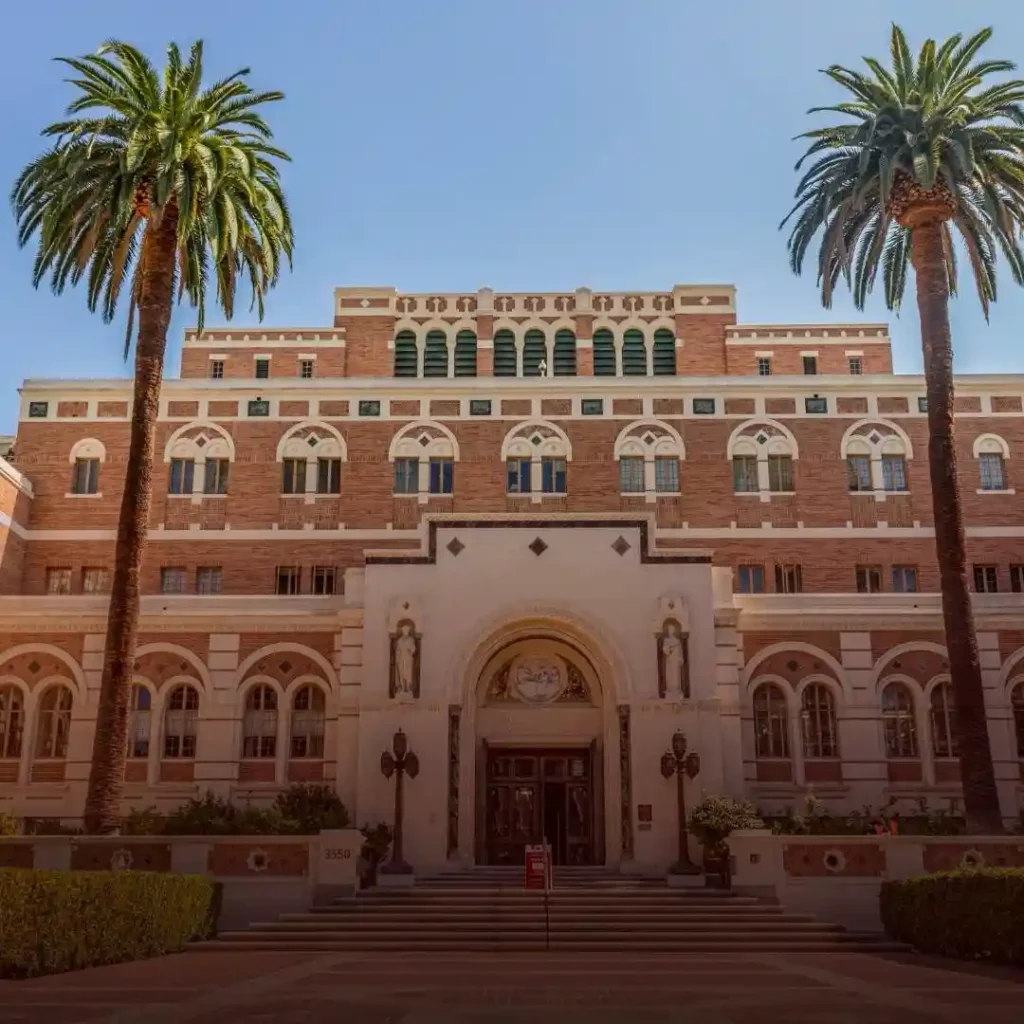E. Randol Schoenberg ’91 recounts reclamation of Nazi-looted art
by Darren Schenck
Event photos by Maria Iacobo
Famous paintings. A contested will. Sovereign immunity. Nazis.
These may sound like the ingredients of a best-selling spy novel, but as dozens of USC Gould students learned at a recent Conversations with the Dean event, they are just some of the elements of a lawsuit brought by E. Randol Schoenberg ’91 against the Austrian government 15 years ago to reclaim Jewish property looted by the Nazi regime in the late 1930s.
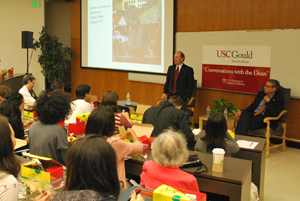 |
| E. Randol Schoenberg '91 and Dean Robert K. Rasmussen discuss the Klimt case with students |
If the case sounds like an unlikely one, Schoenberg’s eventual victory sent a shockwave through the legal world.
“Everybody thought we were going to lose,” said Schoenberg, a litigator who also serves as a lecturer at USC Gould.
Schoenberg told the audience that his case began in the late 1990s with a request from a family friend, Maria Altmann, a native of Austria then in her early 80s. Her family’s art collection had been confiscated by the Nazis shortly after the Anschluss of 1938, when Germany took control of Austria.
Altmann’s aunt, Adele Bloch-Bauer, was a wealthy arts patron who had served as a model for paintings by Gustav Klimt, whose work can be found in some of the world’s most prestigious art museums.
One of those museums was the Austrian Gallery, which possessed five Klimt paintings that had been owned by Bloch-Bauer and her husband, Ferdinand, before World War II.
As Schoenberg explained, although Adele had requested in her will that her husband donate the Klimt paintings to the Austrian Gallery upon her death, he argued that the will was precatory – i.e., Ferdinand was not legally bound to donate the works after his wife died in 1925.
The Anschluss had taken the decision out of the family’s hands. When the Nazis took control of Austria in 1938, they slapped Jewish-owned firms with crippling fines and tax assessments whose payment usually required the Jewish owners and their families to sell their property, including artwork and other valuables.
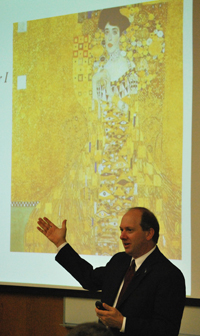 |
| Schoenberg with a slide of Klimt's Portrait of Adele Bloch-Bauer I |
“The Nazis always did things with a veneer of legality,” Schoenberg said. “Ferdinand was assessed with a huge tax penalty and that was used to liquidate his entire estate.”
Although Austrian Jews were able to file claims for restitution of their property beginning in 1948, the paintings remained with the Austrian Gallery, which had acquired them before the war’s end. When the Austrian government passed a 1998 law allowing for the opening of records related to Nazi-looted artwork, Maria Altmann tried to negotiate the return of the Klimt paintings. The Austrian government rejected her offer, citing Adele Bloch-Bauer’s will as proof that the paintings rightfully belonged to the Austrian Gallery.
Schoenberg took up Altmann’s case in 1998. The cost of filing a lawsuit in Austrian courts would have been prohibitively expensive, so he decided to sue Austria in United States District Court. Although the doctrine of sovereign immunity prevents most lawsuits filed against other nations, he believed that the few exceptions to the doctrine applied to his case.
When his firm passed on the case, Schoenberg left and opened his own practice.
“The first year I think I made twenty-thousand dollars,” Schoenberg told the audience. “It was not so easy, but I was able to get business from other lawyers and friends. I never really considered giving it up.”
Austria initially responded to his suit with a motion to dismiss.
“Everybody thought we were going to lose. We miraculously won in the district court,” he said. “Miraculously we won in the 9th Circuit, too.”
According to Schoenberg, the surprising progression of the case unnerved other national governments, as well as the U.S. government.
“The U.S. government was getting calls from all these different countries saying, ‘What’s going on, are we going to be sued for everything that ever happened in our countries?!” Schoenberg recalled, drawing laughs from the audience. “The case went to the Supreme Court, and again, all bets were off. I went in with very low expectations.”
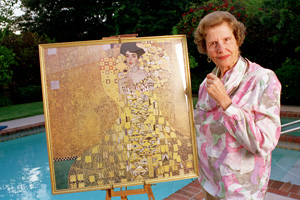 |
| Maria Altmann, who died in 2011, with the recovered painting photo by Volker Corell |
To the surprise of most legal observers, the Supreme Court ruled for Schoenberg. The Austrian government then offered to go to arbitration, but Maria Altmann initially demurred, citing the good outcomes they had been having in American courts.
“I told her, ‘Maria, if you want this case decided in your lifetime, we need to take this chance, because they can drag this out indefinitely,’” he said.
In January 2006, the arbitration panel ruled unanimously in Altmann’s favor, agreeing with Schoenberg that Adele Bloch-Bauer’s will was indeed precatory.
“Then we really celebrated,” Schoenberg said.
The Altmann family decided to auction off the five Klimt paintings, which fetched prices totaling more than $325 million.
Schoenberg’s work was recognized with the California Lawyer “Attorney of the Year” award in 2007, the 2006 Jurisprudence Award from the Anti-Defamation League and the Justice Louis D. Brandeis Award from the American Jewish Congress.
Schoenberg continues to serve as president of the Los Angeles Museum of the Holocaust, a post he has held since 2005. He remains Of Counsel at Burris, Schoenberg & Walden, LLP and has been involved in several other suits involving stolen artworks.
Reflecting on the unlikely path his career has taken, Schoenberg encouraged the students to work hard and pursue opportunities when they arise.
“The education I got here was excellent,” he said. “Take the best job you can, the best firm you can… get that job, and learn to be the best lawyer you can be. You don’t know where life is going to take you.”








